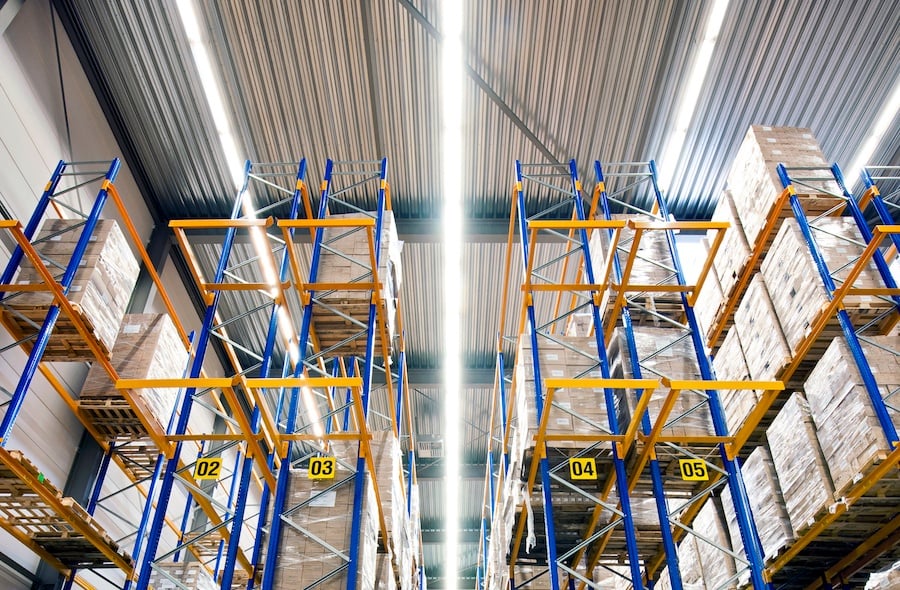
Since the Innovation Lab’s inception in 2015, we have been looking forward to the possibilities of drones in the logistics industry. We are excited about the game-changing capabilities drones bring to our warehouses and yards––and we have no shortage of ideas and eagerness to test them out.
What excites us most right now is how close we are to seeing realistic drone applications in warehousing. We are on the cusp of some great work, thanks to the FAA’s lack of restrictions on indoor drones. We are free to hypothesize and test as we please!
However, we have noted several things that act as obstacles––literally––to our indoor logistic drones. So today, we’re sharing 9 of those things that may keep your indoor drones on the ground as you start to implement them in your warehouses and in your supply chain management.
9 Dangerous Obstacles That Will Ground Your Indoor Logistic Drones
1. Weak GPS technology. Because GPS does not work inside most buildings, drones cannot be used effectively indoors. The only alternatives to GPS are manual flight or beaconing systems, the latter being expensive. As the technology grows and becomes more ubiquitous, we hope to see more friendly prices.
2. Lack of drone self-awareness around moving objects. Drone operators cannot blueprint forklifts, cherry pickers, scissor lifts, and other tools that are constantly moving around. The drone has to be self-aware and avoid things on its own, which the technology does not yet do.
3. No fully automated control (yet). We are just in the early stages of automated control. Today, people are manually flying drones. Full automation of logistic drones will make your drone “fleet” management much simpler.
4. …Which means time-intensive training for your staff––and lots of it. The above-mentioned manual control is also a huge obstacle because your drone-inclined employees will have to use work time to learn the ins and outs of drone operation, then apply it to the floor. This mastery does not happen overnight!
5. Clarity on insurance coverage and rates. OSHA and insurance companies have yet to come into the conversation with their respective drone policies. You do not want to invest into drones and then have rates spike, but clarification on your insurance coverage will help you feel more secure within your insurer’s plan.
6. Drafty air and fans. There is no unpredictable weather indoors for you to worry about, but you have (literal) Big Ass Fans that cause airflow and drafts. These disturbances in the air––while much less turbulent than natural wind patterns––vary the conditions in your warehouses.
7. Inconsistent indoor vs. outdoor tech. Right now, drones operating in a YMS (outdoors) are set up with RFID tags for testing. While indoors, drones are using either an optical scanner for barcodes or a camera that recognizes a number pattern for inventory management. With the pros and cons of both these methods still in testing, there’s no clear option for the best technology to use inside.
8. Drones do not scan small objects well. Take a bin of products, for example. If there are 300 small packages inside the bin—or a multitude of small things within a box, like bolts, washers, etc.—your drones will have trouble scanning the information on those items. Because of the current state drones are in, certain industries will have limitations based on their products—companies will have to engineer different packaging plans or pass up on drones altogether.
9. Existing warehouses are not necessarily drone-friendly. If you have warehouses with low ceilings, hanging lights, and lots of intrusive shelves, you will need to consider how your drone will operate there. In the future, we can build out our new spaces to reflect impending drone use.
The Ideal Drone Situation Right Now
All of these obstacles lead us to a vision of what the ideal indoor drone use could be right now: A manufacturer of large appliances that drones could easily scan can better implement drone technology than a pharmaceutical company. These large objects are easy for drones to scan and count. The warehouse would need high ceilings, no major intrusions, and a team dedicated to learning and managing drones as the technology develops rapidly.
To Sum It All Up
Drones are a great solution for some situations, but the current state of drone technology still leaves room for improvement. This is why many companies have yet to implement them across the entire supply chain. This being said, we are still excited for the changes logistic drones will bring to our industry and the advantages our customers will soon have over their competitors.
{{cta(‘ac56a9fb-7647-4058-b69d-ff3e7acf5183’)}}
